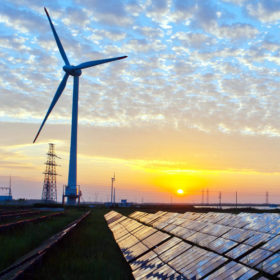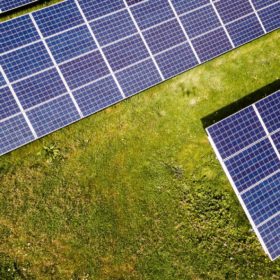Off-grid solar continues to expand
The off-grid solar sector has shown resilience in the face of pandemic-related challenges, with 70 million people gaining access to electricity from early 2020 to the end of 2021. However, the ability to pay for solar energy kits has taken a hit.
COP26: Calling for foresight of collective consciousness in energy transition
The modernization and transition of energy sources towards environment-friendly options, jointly exercised with the capacity to conserve the proven available reserves, is an action fraught with foresight. The emergence of the future scenarios and how it will all play out in the long term remain unknown to the human consciousness. However, the foresight emanating through the intertwining of the collective consciousness of human existence shall undoubtedly provide us with a potent armory to articulate our response to the emerging scenarios.
Solar sector’s response to Covid
The COVID-19 outbreak impacted the solar industry in terms of cash flow, payment collection from distribution businesses, working capital needs, workforce availability, and, most critically, supply chain availability. The government’s response to this situation was mainly positive.
India installed 10 GW of solar in 2021
India recorded the highest ever annual solar installation in 2021 despite a rise in component costs.
China and India to drive record world coal demand next year
Advances in solar power and other clean energy technologies have failed to keep up with demand for electricity as economies rebound from the Covid crisis and China and India’s fossil fuel appetite will ensure the world stays well short of what is needed for a net zero 2050 for at least the next three years.
Dispute resolution committee to look into commissioning extension for solar projects due before April
The ministry of New and Renewable Energy has empowered the Dispute Resolution Committee to look into commissioning extension requests for solar projects that are due for delivery before April 1 next year.
Solar job numbers kept on rising in 2020
The latest edition of a clean power jobs survey produced by IRENA and the International Labour Organization has stressed the important role which will need to be played by the public sector if the energy transition’s employment benefits are to be shared equally.
Module and shipping cost inflation could cost the world 50 GW of solar next year
The input costs of the two biggest contributors to solar plant development expense have gone through the roof since the world began to come out of Covid-19 lockdowns, to leave project developers with some difficult choices.
India added 8.8 GW of solar in the first nine months of 2021
The solar capacity addition for the calendar year 2021 is expected to touch 14 GW (11 GW utility scale and 3 GW rooftop) if the third Covid wave does not strike between November and December.
ICRA improves energy demand outlook for FY2022
The ratings agency expects the energy demand in FY 2021-22 to grow by 8-8.5%. While the increased energy demand will improve the thermal plant load factor (PLF) level, this sector outlook remains negative as the PLF level will remain below 60%.















